Last updated on
Learn the simple steps to easily adjust a sliding pocket door for smooth operation and perfect alignment in this comprehensive guide.
Pocket doors are popular for homeowners who want to save space and enjoy a sleek, modern look. These doors slide into the wall, opening up more floor space and creating an unobstructed view.
However, as with any moving part of your home, pocket doors can become misaligned or stuck over time. If you’re struggling to adjust your sliding pocket door, don’t worry! In this article, we’ll look closer at adjusting and maintaining your pocket door so that it continues to function smoothly for years to come.
Whether you’re dealing with a stubborn door or just looking for preventative maintenance tips, keep reading to learn more about keeping your sliding pocket door in shape.
Key takeaways:
- Sliding pocket doors save space and add style to your home.
- Adjusting a sliding pocket door is simple with the right tools and knowledge.
- Preparing for pocket door adjustment involves clearing obstacles and gathering tools.
- Adjusting the height and side margin of the door can solve common issues.
- Troubleshoot track and roller problems and consider contacting a professional if needed.
Table of Contents
Introduction to Sliding Pocket Door Adjustment
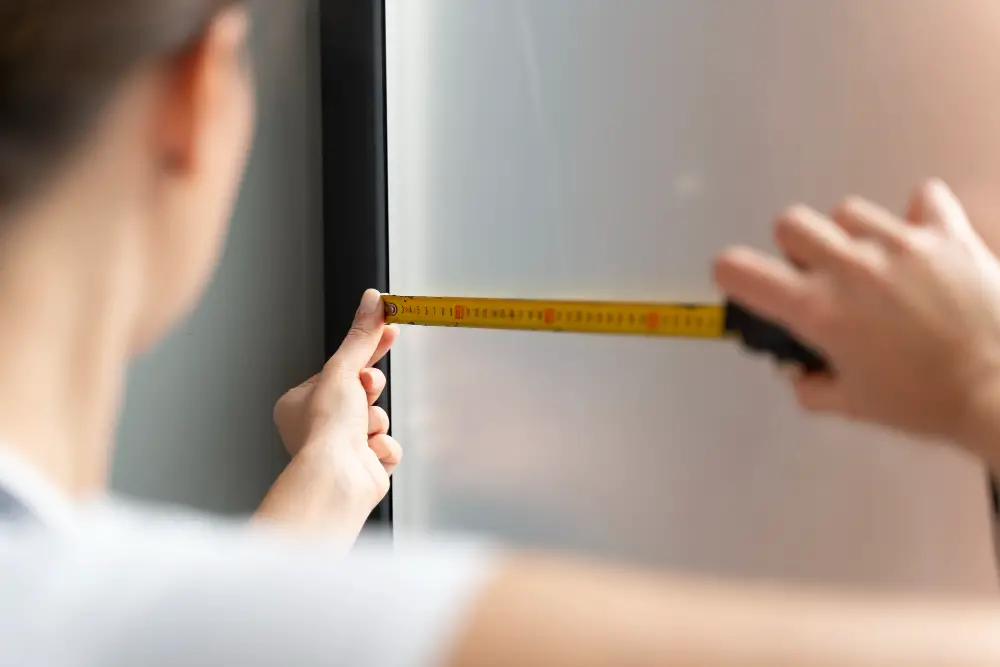
Sliding pocket doors are a great way to save space and add style to your home. However, like any other moving part of your house, they can become misaligned or stuck over time.
This is where adjusting the sliding pocket door comes in handy. Adjusting a sliding pocket door may seem daunting initially, but with the right tools and knowledge, it’s quite simple.
In this article series on how to adjust a sliding pocket door for smooth operation and perfect alignment, we will take you through all the steps required to successfully adjust your sliding pocket doors without having to call in an expert.
We’ll start by discussing what you need before getting started with adjusting your pockets doors, such as tools needed, etc., then move onto specific adjustments that can be made, including height adjustment or side margin adjustments which are common issues faced by homeowners when dealing with their own DIY projects around their homes.
Preparing for Pocket Door Adjustment
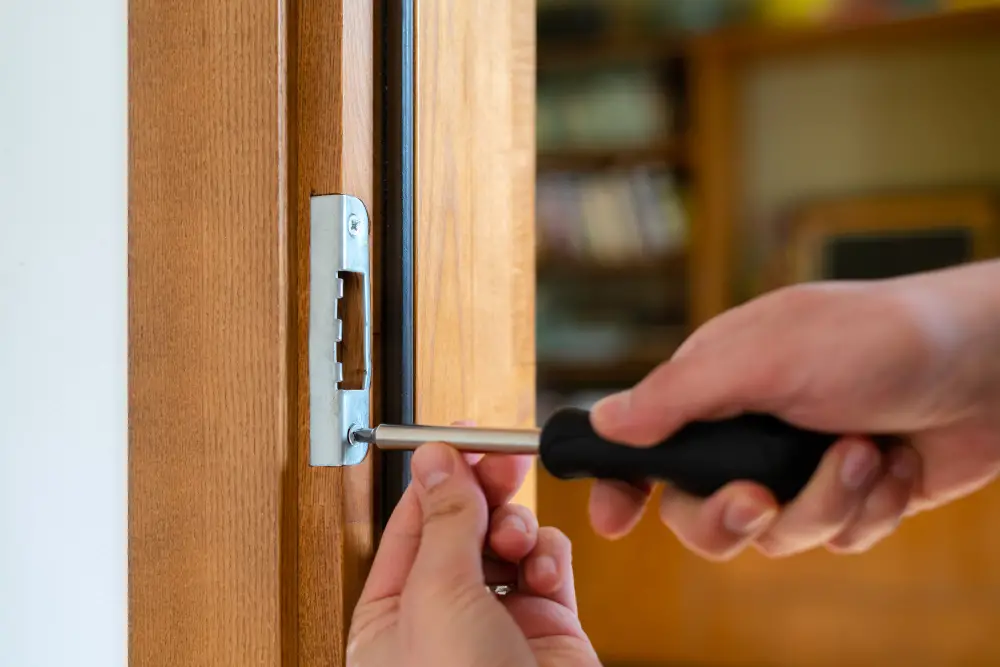
First, clear any obstacles around the door so you have plenty of room to work. Next, inspect the track and rollers for damage or debris that may be causing issues with operation.
If there is dirt or debris on either one of these components, clean them thoroughly before proceeding.
Once you’ve cleared any obstructions and inspected your pocket door system for damage or wear-and-tear issues, it’s time to gather your tools. You’ll need a few basic items like a screwdriver set (both flathead and Phillips), pliers (needle-nose are best), lubricant spray such as WD-40®, masking tape (to protect surfaces during adjustment) – but most importantly: a Pocket Door Wrench.
A Pocket Door Wrench is an essential tool when working with sliding pocket doors because it allows easy access to adjust both height & side margin without having to remove trim pieces first! These wrenches come in different sizes depending on what type of hardware was used by manufacturers; make sure yours matches up correctly before starting adjustments.
Adjusting the Pocket Door Height
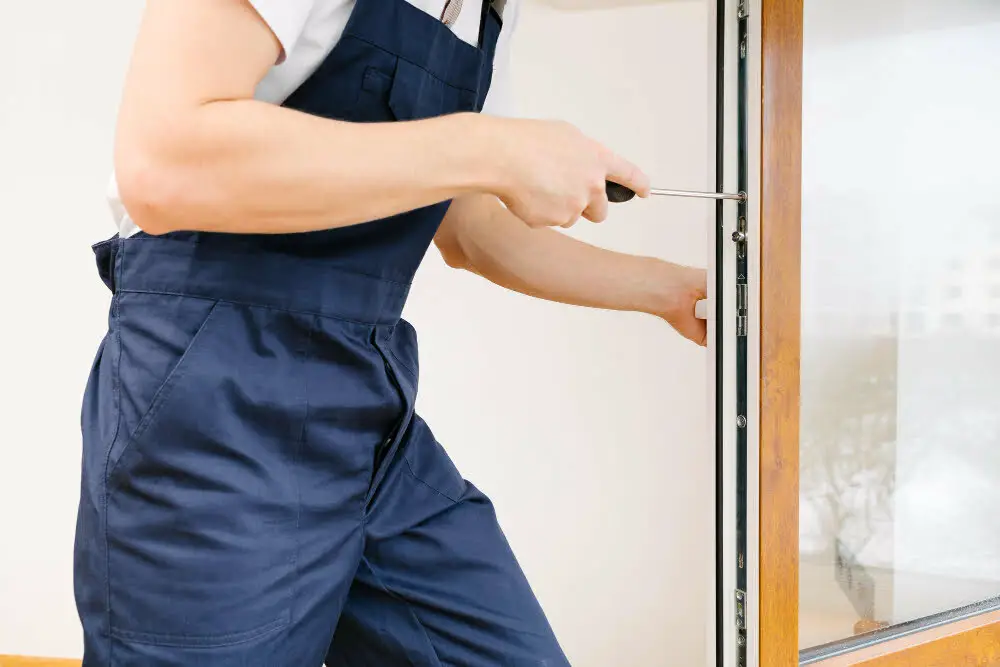
If you’re experiencing this problem, adjusting the height of your pocket door may be necessary.
To adjust the height of your sliding pocket door, start by locating the adjustment screws at either end of the track. These screws are typically located on a bracket that attaches to each end of the track and holds it in place.
Using a screwdriver or Allen wrench (depending on what type of screw head is present), turn these adjustment screws clockwise or counterclockwise until you achieve proper alignment and smooth operation. Make small adjustments at first and test after each one until you get it just right.
It’s important to note that if your door still doesn’t operate smoothly after adjusting its height, there may be other issues with its alignment that need addressing as well. In such cases, consulting an expert for further assistance might be necessary.
Adjusting the Pocket Door Side Margin

This is important for ensuring that your door slides smoothly and doesn’t get stuck or jammed in the wall. To adjust the side margin, start by removing any trim around the pocket door opening so that you can access both sides of the frame.
Next, use a level to check whether your pocket door is plumb (i.e., perfectly vertical) on both sides. If not, use shims or wood wedges to adjust its position until level.
Once you’ve ensured that your sliding pocket door is plumb and level on both sides, measure the space between each edge of the door and its corresponding jamb (the vertical part of a doorway). Ideally, this gap should be even all around – typically about 1/8 inch – but if it isn’t equal everywhere, then adjustments need making.
To make these adjustments loosen screws at the top/bottom rollers with an appropriate screwdriver, then slide them left/right as needed before tightening again once they are aligned correctly.
Problems With the Pocket Door Track & Rollers
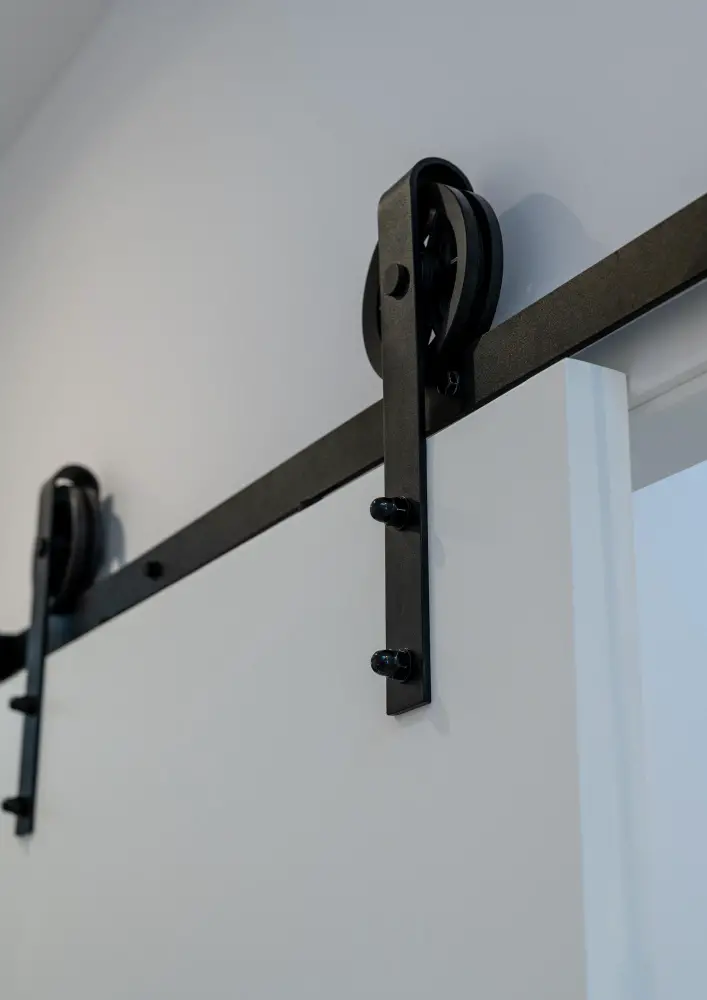
Over time, dirt, dust, and debris can accumulate in the tracks or on the rollers. This buildup can cause your door to become stuck or make it difficult to move smoothly along its track.
To fix this problem, clean debris from both sides of your pocket door’s track using a soft-bristled brush or vacuum cleaner attachment. Next, inspect each roller for signs of wear and tear, such as cracks or flat spots causing it to stick.
If you notice any damage to your rollers during the inspection, replace them immediately with new ones compatible with your specific type of pocket door system. You should also regularly use a silicone-based spray lubricant to lubricate all moving parts, including hinges and locks.
Understanding Pocket Door Wrenches

These specialized wrenches are designed to fit into the small space between the door and the wall, allowing you to easily adjust the height and side margin of your pocket door. Pocket door wrenches come in various sizes, so choosing one that fits your specific type of pocket door is essential.
When using a pocket door wrench, following proper safety precautions is essential. Make sure you turn off power sources near electrical outlets or light switches before adjusting your sliding doors.
If you’re uncomfortable making adjustments or encountering more serious problems with your sliding doors, such as broken rollers or damaged tracks, consider contacting a professional repair service for assistance.
Understanding how to use a pocket door wrench is crucial when properly adjusting these types of doors.
What Does a Pocket Door Wrench Do?
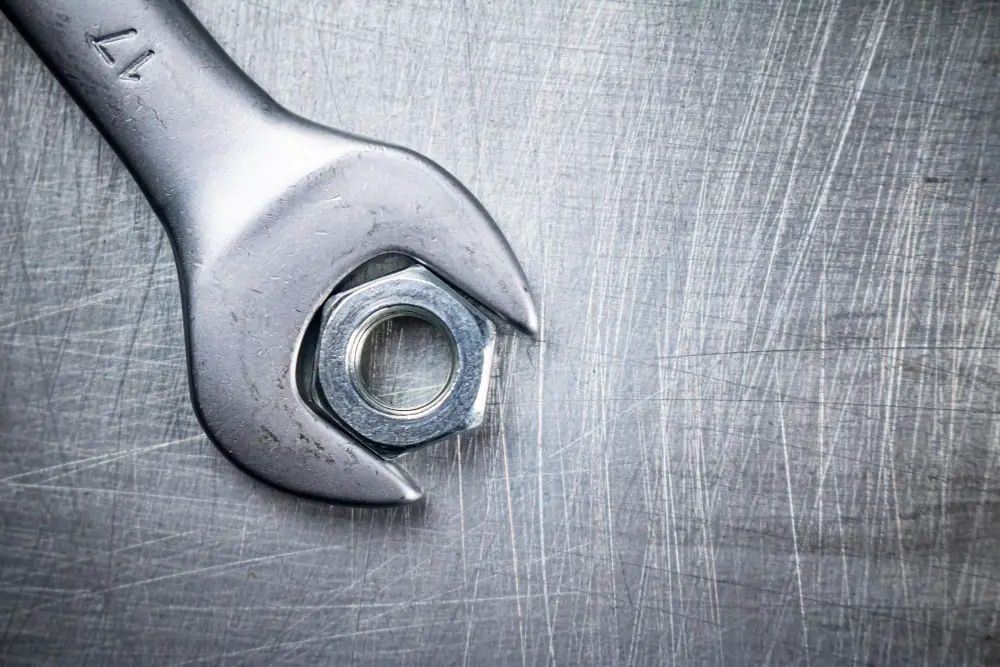
It’s an essential tool for anyone looking to maintain or repair their pocket door, allowing you to make precise adjustments without damaging the surrounding wall or frame.
The wrench fits into a small slot on the top of your pocket door roller assembly. Once inserted, you can use it to turn a screw that raises or lowers the roller assembly, adjusting its height and allowing for smoother operation.
It’s important to note that not all pocket doors require this type of adjustment – some may have different mechanisms for raising and lowering rollers. However, if your sliding door is misaligned or difficult to operate, using a pocket door wrench could be just what you need.
If you’re unsure whether your particular model requires this type of adjustment tool, consult with your manufacturer’s instructions before attempting any repairs yourself.
Size of Pocket Door Wrenches

A pocket door wrench is one of the most essential tools you’ll need. This specialized tool allows you to easily adjust the height and side margin of your pocket door.
Pocket door wrenches come in different sizes, so choosing one that fits your specific type of pocket door is essential. Most standard-sized doors require a 3/8-inch or 7/16-inch wrench, while larger doors may require a bigger size.
If you’re unsure what size wrench you need for your particular model of sliding pocket door, consult with the manufacturer or check their website for guidance. Using an incorrect-sized wrench can cause damage to both the tool and your hardware.
In addition to choosing the right size wrench for your needs, make sure that it’s made from high-quality materials such as steel or aluminum alloy, which will ensure its durability over time.
Is There a Tool for Adjusting Pocket Doors Other Than a Pocket Door Wrench?
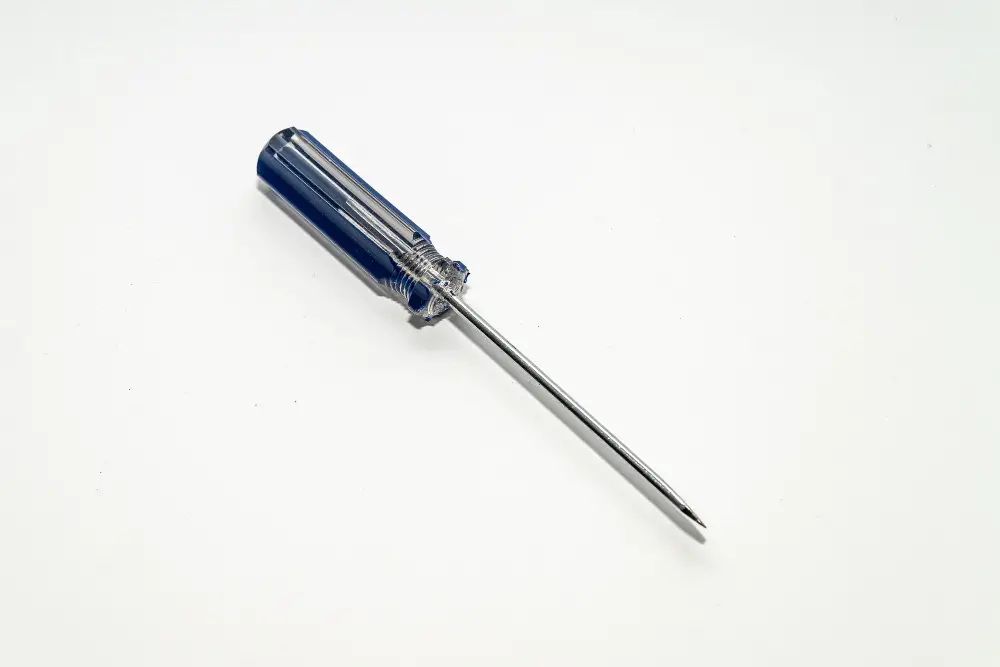
One such tool is a flathead screwdriver. A flathead screwdriver can adjust the height of your pocket door by turning the screws at the bottom of each roller bracket.
Another valuable tool for adjusting your sliding pocket door is level. A level will help you ensure your door is properly aligned and not crooked or slanted.
If you’re dealing with stubborn rollers or track issues, you may also want to consider using some lubricant like WD-40 or silicone spray to help loosen things up and make adjustments easier.
Ultimately, while a dedicated pocket door wrench may be ideal for making precise adjustments quickly and easily, other tools can undoubtedly get the job done if needed.
What Are the Typical Problems Experienced With Pocket Doors?
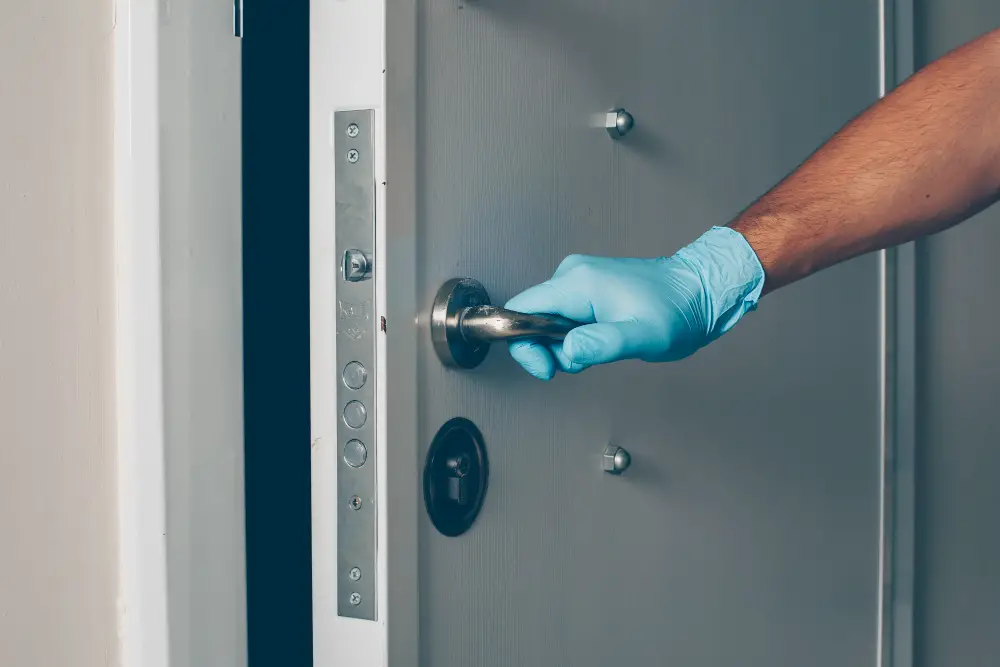
One of the most common issues with pocket doors is misalignment. This can happen when the door becomes loose on its track or if it’s not installed correctly in the first place.
Misaligned pocket doors may stick or become difficult to open and close, frustrating homeowners.
Another issue you might encounter with your sliding pocket door is the rollers or track damage. Over time, these components can wear down and become damaged from regular use.
If this happens, you may notice that your door doesn’t slide as smoothly as it used to.
Some homeowners experience problems with their pocket doors due to poor installation practices by contractors who didn’t follow manufacturer instructions properly during installation.
Can You Get Online Support From Pocket Door Manufacturers?

Many manufacturers offer online resources and customer service representatives who can help troubleshoot common issues with pocket doors. Some companies even provide instructional videos or step-by-step guides on their websites to walk you through the adjustment process.
Before contacting the manufacturer, be sure to have your door’s information handy, including its model number and any other identifying details. This will make it easier for customer service representatives to assist you quickly and efficiently.
Remember that while DIY adjustments are possible with some basic tools and knowledge, it’s always best to consult a professional if you’re unsure about making changes yourself. A qualified contractor or repair person can ensure that your pocket door is adjusted correctly without causing damage or further problems.
Many manufacturers offer online support options for customers experiencing issues with their sliding pocket doors.
How to Repair Pocket Door Jams
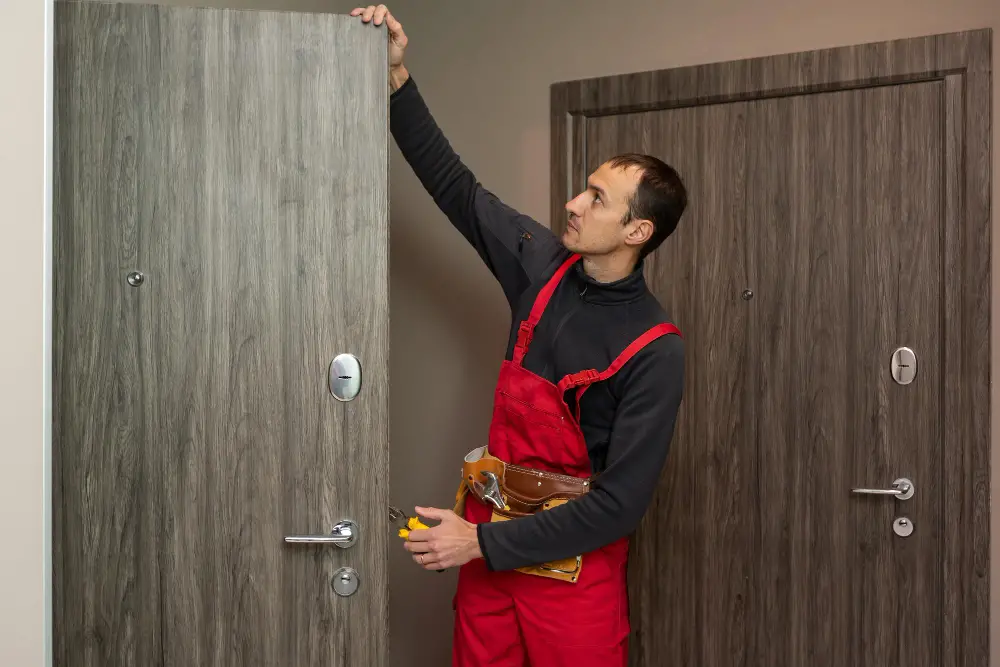
First, check for any obstructions in the track or rollers that may prevent the door from sliding smoothly. If nothing is blocking its path, try adjusting the height and side margins of your pocket door as we discussed earlier.
If these adjustments don’t work, it’s possible that something has become lodged inside your wall cavity. In this case, you must remove the trim around your pocket door frame to access its inner workings.
Once you’ve removed any obstructions from inside of your wall cavity (such as nails or screws), reattach all necessary hardware before testing out how well it slides again. If everything seems fine but still doesn’t slide properly, consider replacing damaged parts like rollers or tracks with new ones.
Roller Problems and Solutions
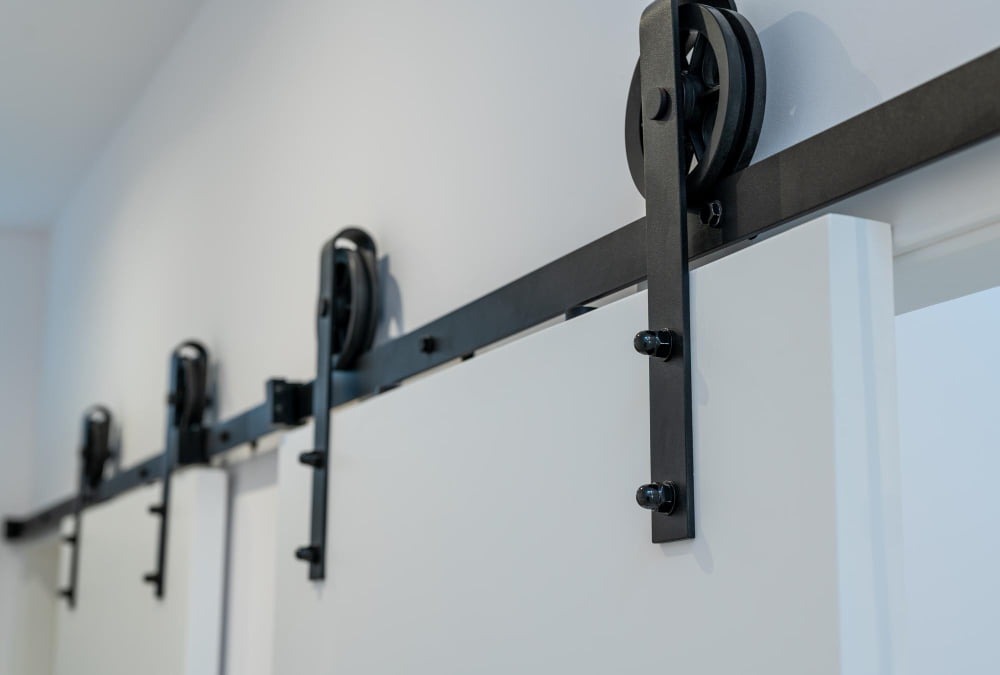
Over time, these small wheels can become worn or damaged, causing your door to stick or slide unevenly. Fortunately, there are a few simple solutions that you can try if you’re experiencing roller problems.
Firstly, check to see if any debris has accumulated on the rollers. Dirt and dust can build up over time and cause friction between the wheel and the track.
If so, clean off your rollers using a soft cloth or brush.
If cleaning doesn’t solve your problem, then it’s possible that one of your rollers may be damaged beyond repair – in which case it will need replacing altogether.
Replacing a roller isn’t difficult but requires some basic DIY skills and access to replacement parts (which should be available from most hardware stores). Once you have removed any screws holding them in place; gently lift out each old roller before inserting new ones into their slots on either side of where they were previously located within their tracks – making sure not to damage anything else while doing so!
Troubleshooting Track Issues

The track is an essential component of a pocket door system, as it guides the rollers along their path and ensures smooth operation. However, over time, dirt and debris can accumulate on the track or cause damage to its surface.
To troubleshoot issues with your pocket door’s track, inspect it for any visible signs of wear or damage. Look for dents or scratches that could be causing friction between the rollers and the track’s surface.
Next, clean out any debris that may have accumulated in or around your pocket door’s tracks using a soft-bristled brush. Remove all dirt particles from both sides of each roller before testing again.
Access Considerations for Pocket Door Repair

Depending on the location of your pocket door, you may need to remove trim or cut into the wall to access the track and rollers. This can be a daunting prospect for many homeowners, but with careful planning and preparation, it’s possible to make these repairs without causing too much disruption.
Before you begin any work on your pocket door, take some time to assess the situation and determine what kind of access you’ll need. If your door is located in an area that’s easily accessible (such as a closet or pantry), then removing trim may be all that’s required.
However, cutting into walls might become necessary if obstructions, such as built-in shelves or cabinets, block easy entry points.
If cutting into walls becomes necessary for repair purposes; ensure that electrical wires are not damaged during this process by turning off the power supply from the main switchboard before proceeding with any work.
When All Else Fails: Cutting a Hole in the Wall
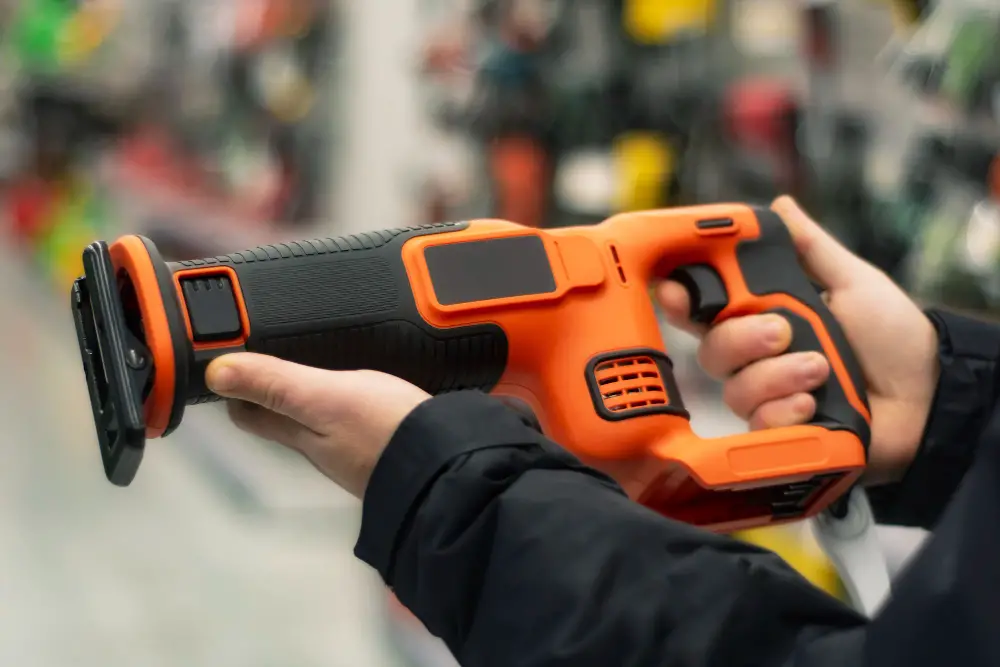
This is not an ideal solution, but sometimes it’s necessary if serious issues with the track or rollers can’t be fixed any other way. Before cutting into your walls, make sure you have a plan for how to repair them once the work is done.
To cut a hole in the wall for pocket door adjustment:
- Locate where on your wall to cut.
- Use drywall saws or reciprocating saws.
- Cut out enough of an opening to access both sides of the sliding pocket door frame.
- Once inside, assess what needs fixing and proceed accordingly.
Tips for Effective Pocket Door Adjustment
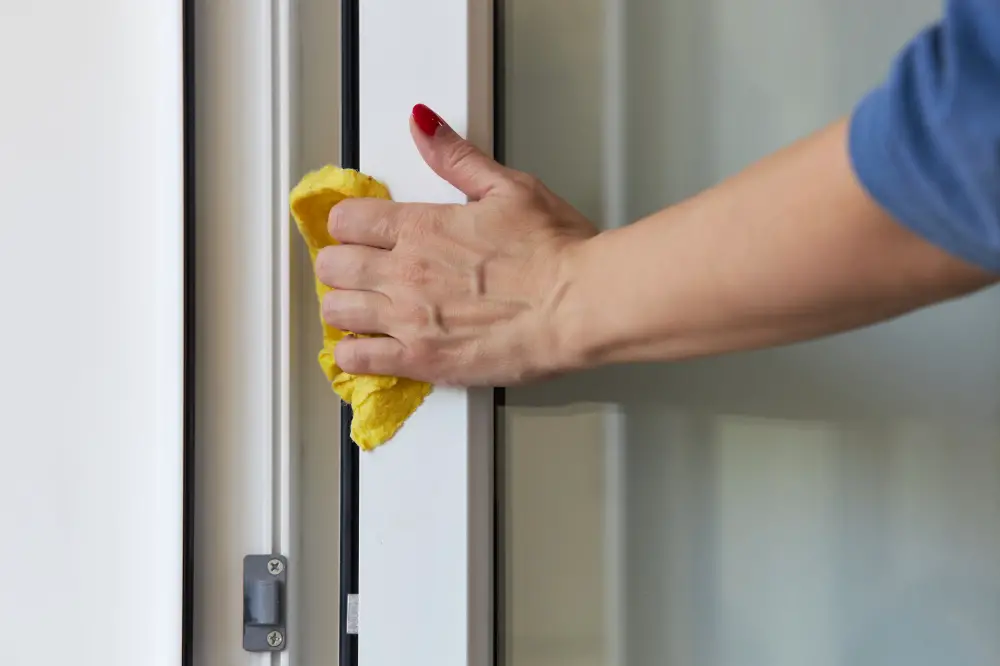
Here are some tips for effective pocket door adjustment:
1. Regularly clean the track and rollers: Dirt and debris can build up on the track and rollers over time, causing them to become clogged or damaged.
Use a soft brush or cloth to remove any dirt or debris from these areas.
2. Lubricate moving parts: Apply a small amount of lubricant (such as WD-40) onto the tracks and rollers every few months to ensure smooth operation.
3. Check for loose screws: Over time, screws holding various components of your pocket door may loosen due to regular use or vibrations in your home’s structure.
Make sure all screws are tightened securely during maintenance checks.
4. Keep an eye out for signs of wear and tear: If you notice any cracks, chips, dents, or other damage on your sliding pocket doors’ frame/panels/tracks/rollers/wheels/handles, etc., address them immediately before they worsen into bigger problems that require more extensive repairs/replacements.
That’s How to Adjust Pocket Doors the Right Way
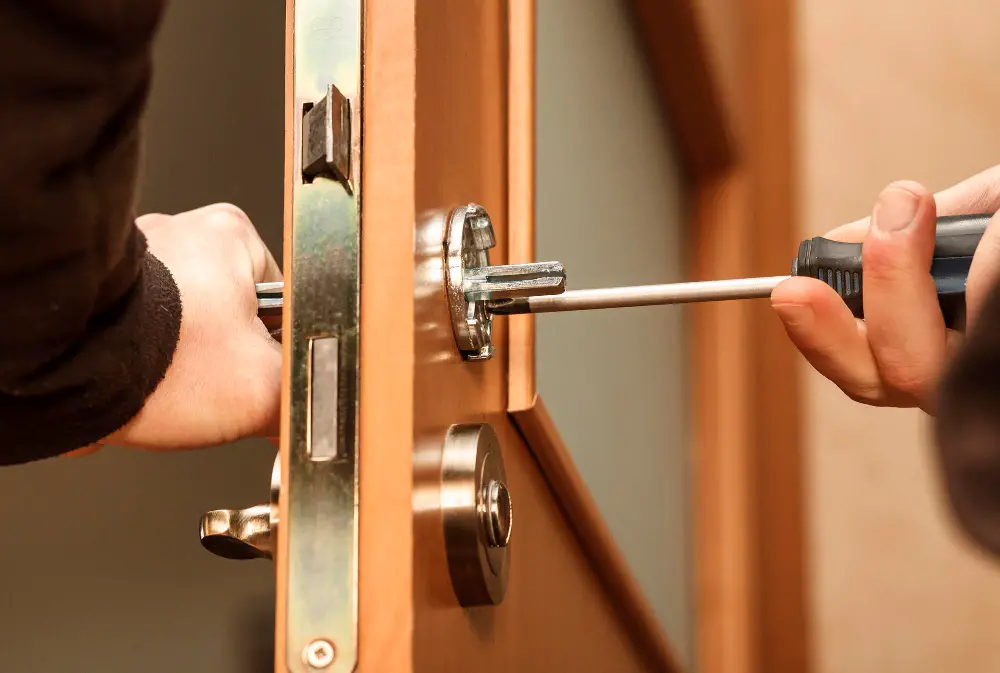
By following the steps outlined in this article, you can adjust your pocket door for smooth operation and perfect alignment.
Remember to take your time when adjusting your pocket door. Rushing through the process could cause more harm than good.
Start preparing for adjustment by gathering all necessary tools and materials before beginning work on the door.
Once you’ve prepared properly, adjust the height of your sliding pocket doors using a wrench or screwdriver until it is level with its frame. Then move onto side margin adjustments if required.
If problems persist after making these adjustments, such as track issues or roller problems, then troubleshoot accordingly using our guide above, which covers common issues experienced with Pocket Doors and their solutions.
Taking care of any repairs promptly when they arise rather than waiting until they become major issues will save both time & money in future maintenance costs while ensuring that everything continues running smoothly without interruption!
FAQ
Why is my pocket door not sliding correctly?
Your pocket door is not sliding correctly, likely due to issues with the track system, rollers, or hardware components.
Can you fix a pocket door without removing the trim?
Yes, some pocket door issues can be fixed without removing trim, but most problems require the removal of select areas of trim.
What are the common issues that cause pocket doors to malfunction?
Common issues causing pocket doors to malfunction include misaligned tracks, worn-out hardware, damaged rollers, and debris obstructing the door’s pathway.
How can I maintain my sliding pocket door for smooth operation?
To maintain your sliding pocket door for smooth operation, regularly clean and lubricate the tracks and rollers while also checking for any obstructions or misalignments.
What tools and materials are needed to adjust a sliding pocket door properly?
One needs tools and materials such as a screwdriver, wrench, doorjamb, level, and shims to adjust a sliding pocket door properly.




